
Cyprinodontiformes is an order of ray-finned fish, comprising mostly small, freshwater fish. Many popular aquarium fish, such as killifish and live-bearers, are included. They are closely related to the Atheriniformes and are occasionally included with them. A colloquial term for the order as a whole is toothcarps, though they are not actually close relatives of the true carps – the latter belong to the superorder Ostariophysi, while the toothcarps are Acanthopterygii.

Poeciliidae are a family of freshwater fishes of the order Cyprinodontiformes, the tooth-carps, and include well-known live-bearing aquarium fish, such as the guppy, molly, platy, and swordtail. The original distribution of the family was the Southeastern United States to north of Río de la Plata, Argentina, and Africa, including Madagascar. Due to release of aquarium specimens and the widespread use of species of the genera Poecilia and Gambusia for mosquito control, though, poeciliids can today be found in all tropical and subtropical areas of the world. In addition, Poecilia and Gambusia specimens have been identified in hot springs pools as far north as Banff, Alberta.
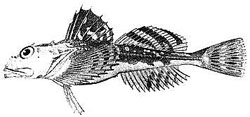
A sculpin is a type of fish that belongs to the superfamily Cottoidea in the order Scorpaeniformes. As of 2006, this superfamily contains 7 families, 94 genera, and 387 species.

The Scorpaeniformes are a diverse order of ray-finned fish, including the lionfishes and sculpins, but have also been called the Scleroparei. It is one of the five largest orders of bony fishes by number of species, with over 1,320.

Myliobatiformes is one of the four orders of batoids, cartilaginous fishes related to sharks. They were formerly included in the order Rajiformes, but more recent phylogenetic studies have shown the myliobatiforms to be a monophyletic group, and its more derived members evolved their highly flattened shapes independently of the skates.

Cypriniformes is an order of ray-finned fish, which includes many families and genera of cyprinid fish, such as barbs, gobies, loaches, botias, and minnows. Cypriniformes is an “order-within-an-order”, placed under the superorder Ostariophysi—which is also made up of cyprinid, ostariophysin fishes. The order contains 11-12 families, over 400 genera, and more than 4,250 named species; new species are regularly described, and new genera are recognized frequently. Cyprinids are most diverse in South and Southeast Asia, but are entirely absent from Australia and South America. At 112 years old, the longest-lived cypriniform fish documented is the bigmouth buffalo.

The Atheriniformes, also known as the silversides, are an order of ray-finned fishes that includes the Old World silversides and several less-familiar families, including the unusual Phallostethidae. The order includes at least 354 species. They are found worldwide in tropical and temperate marine and freshwater environments.
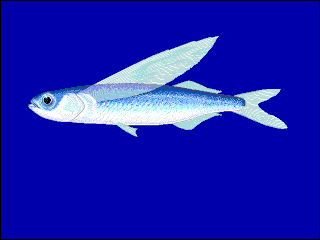
Beloniformes is an order composed of six families of freshwater and marine ray-finned fish:
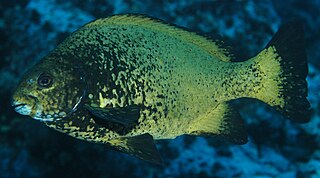
Percoidei is one of 3 suborders of bony fishes in the order Perciformes. Many commercially harvested fish species are considered to be contained in this suborder, including the snappers, groupers, basses, goatfishes and perches.
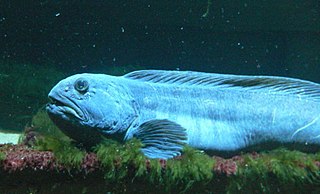
Zoarcoidei is a suborder of marine ray-finned fishes belonging to the order Scorpaeniformes. The suborder includes the wolffishes, gunnels and eelpouts. The suborder includes about 400 species. These fishes predominantly found in the boreal seas of the northern hemisphere but they have colonised the southern hemisphere.

Cottoidei is a suborder of ray-finned fishes which, according to the 5th edition of Fishes of the World, is placed within the order Scorpaeniformes, alongside the scorpionfishes, flatheads, eelpouts, sticklebacks and related fishes.

Syngnathoidea is a superfamily of the pipefish order Syngnathiformes. It is divided into two families, the speciose pipefish Syngnathidae, which includes the sea horses and monotypic Solenostomidae, the ghost pipefishes, which has just five species. The superfamily occurs worldwide in tropical, subtropical and temperate seas, especially in coastal waters around rock and coral reefs and among sea weed and sea grass beds. However, there are also pelagic species of pipefish and even freshwater species. In total the superfamily comprises in excess of 50 genera and nearly 300 species.

Ovalentaria is a clade of ray-finned fishes within the Percomorpha, referred to as a subseries. It is made up of a group of fish families which are referred to in Fishes of the World's fifth edition as incertae sedis, as well as the orders Mugiliformes, Cichliformes, and Blenniiformes. It was named by W. L. Smith and T. J. Near in Wainwright et al. (2012) based on a molecular phylogeny, but the authors suggested that the group was united by the presence of demersal eggs that are attached to a substrate. Some authors have used the ordinal name Stiassnyiformes for a clade including Mugiloidei, Plesiopidae, Blenniiformes, Atherinomorpha, and Cichlidae, and this grouping does appear to be monophyletic.

The Atherinomorpha is a clade of fishes in the superorder Acanthopterygii, the ray-finned fishes, consisting of three orders. The clade is ranked as an infraseries within the subseries Ovalentaria, which in turn is ranked within the wider Percomorpha clade.
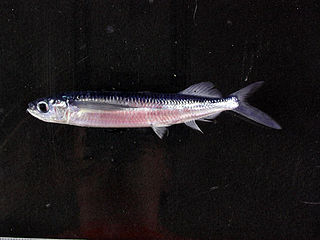
Exocoetoidei is a suborder of the order Beloniformes, which is sometimes known as the Belonoidei. It contains two superfamilies and five families.

Scomberesocoidea is a superfamily within the suborder Exocoetoidei of the order Beloniformes. It consists of two families which are commonly known as the needlefishes and the sauries.

Cyprinodontoidei is a suborder of fishes, one of the two suborders in the order Cyprinodontiformes. The Cyprinodontoidei consists of four superfamilies which are found in the Americas, the Mediterranean and in Africa, including Madagascar.

The Funduloidea is a superfamily of fishes in the suborder Cyprinodontoidei, one of two suborders which make up the order Cyprinodontiformes. It is one of four superfamilies within the suborder.
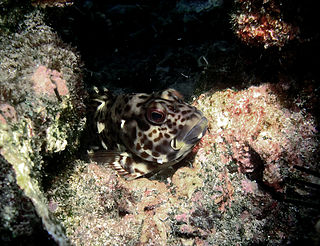
Cirrhitoidea is a superfamily within the suborder Percoidei of the large order of ray-finned fishes, the Perciformes.

Cyclopteroidea is a superfamily of ray-finned fishes within the order Scorpaeniformes. The superfamily comprises 2 families, the Cyclopteridae, the lumpsuckers, of the cool northern seas and the widespread Liparidae, the snailfishes. A common feature shared by these families is that they typically have the pelvic fins modified to form a disc shaped sucker.



















